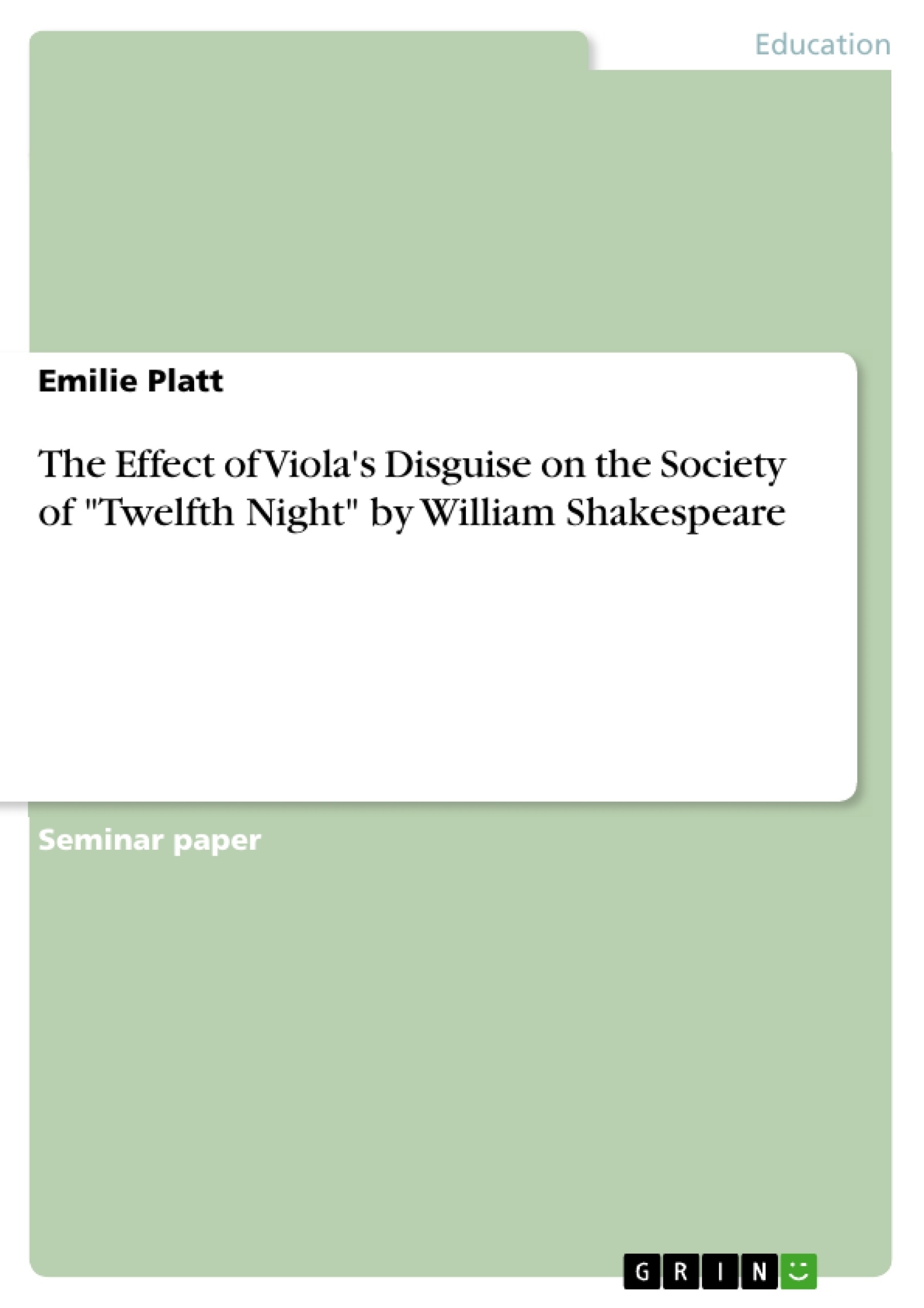“One face, one voice, one habit, and two persons! / A natural perspective, that is and is not.” An image which seems to dominate William Shakespeare's play "Twelfth Night or What you will". It is said that "Twelfth Night" presents a vision of female erotic desire and constant amity through 'structural imagination' of theatrical cross-dressing. An aspect which seemed to be a taboo in the Elizabethan England due to the fact that identity, class and society where very important at this time.
Shakespeare's staging of "Twelfth Night" is therefore described as a conflict between represented and representing bodies but also the presence of a single body in a double aspect. Within this imagine of cross-dressing the aspect of desire toward the same sex is mentioned and produces a confusion. The fact that the main protagonist, Viola, is disguised as a man, triggers a certain confusion which is recognized throughout the whole play. Her gender role in the society and her relation to the other characters, especially the relation to Orsino and Olivia is questioned.
Table of Contents
- Introduction
- Definition of Gender according to Judith Butler's Gender Theory
- Concept of Gender Performativity
- Heteronormative Society
- Two opposed Characters in one Person
- Connection of female and male markers represented by Viola
- Violas Gender Performance with respect to the Concept of Gender Performativity
- Same sex love in Twelfth Night
- Male friendship, focusing Antonio and Sebastian
- Love Triangle
- Olivia and Viola
- Viola and Orsino
- Orsino and Olivia
- The Effect of Viola's Disguise
- Legal marriage as the Solution
- Conclusion
Objectives and Key Themes
This paper explores the complexities of gender identity and same-sex desire within the context of Shakespeare's play "Twelfth Night." The analysis focuses on the character of Viola, who disguises herself as a man, Cesario, and explores how her performance of masculinity impacts her interactions with other characters and societal norms.
- Judith Butler's Gender Theory and the concept of gender performativity
- The role of heteronormativity in shaping societal expectations and gender identities
- The representation of same-sex love in "Twelfth Night," specifically exploring male friendships and the love triangle between Viola, Orsino, and Olivia
- The effect of Viola's disguise on the characters and the society of the play
- The resolution of the love triangle through legal marriage as a reflection of societal norms and limitations
Chapter Summaries
- Introduction: This chapter introduces the play "Twelfth Night" and its themes of gender, identity, and desire, focusing on Viola's cross-dressing and the confusion it creates. It establishes the focus of the paper, which is to analyze Viola's gender performance in the context of Judith Butler's Gender Theory.
- Definition of Gender according to Judith Butler's Gender Theory: This chapter defines Judith Butler's Gender Theory and explores its key concepts, including gender performativity and the influence of heteronormative society. It discusses Butler's critique of the binary system of gender and her argument that gender is a performance shaped by societal norms and expectations.
- Two opposed Characters in one Person: This chapter delves into the character of Viola and her portrayal of both femininity and masculinity. It examines the connection of female and male markers represented by Viola and discusses her gender performance in relation to Judith Butler's theory of performativity.
- Same sex love in Twelfth Night: This chapter explores the themes of same-sex love within the play, focusing on the male friendship between Sebastian and Antonio and the complex love triangle involving Viola, Orsino, and Olivia. It examines the implications of Viola's disguise and its impact on the dynamics of desire and attraction.
Keywords
This paper explores the key concepts of gender, identity, performativity, heteronormativity, and same-sex desire within the context of Shakespeare's "Twelfth Night." It draws heavily on Judith Butler's Gender Theory, particularly her concept of gender performativity, and analyzes Viola's performance of masculinity as a means of understanding the complexities of gender identity and societal expectations.
- Quote paper
- Emilie Platt (Author), 2017, The Effect of Viola's Disguise on the Society of "Twelfth Night" by William Shakespeare, Munich, GRIN Verlag, https://www.grin.com/document/420478




